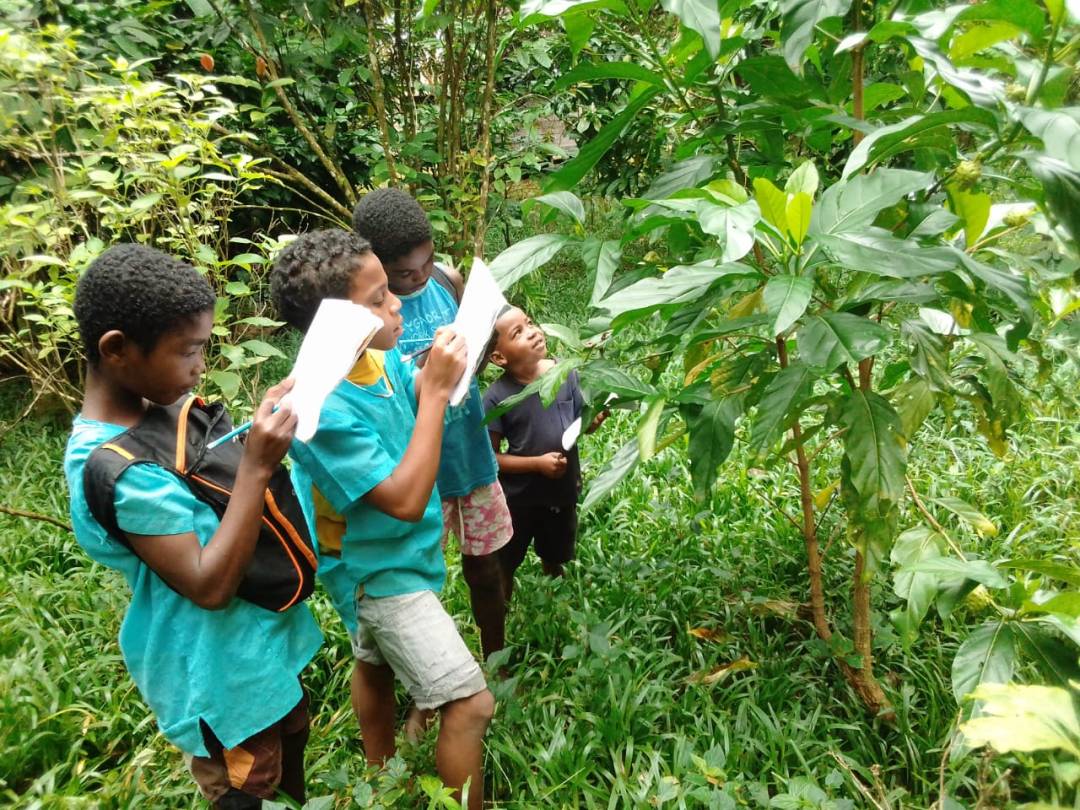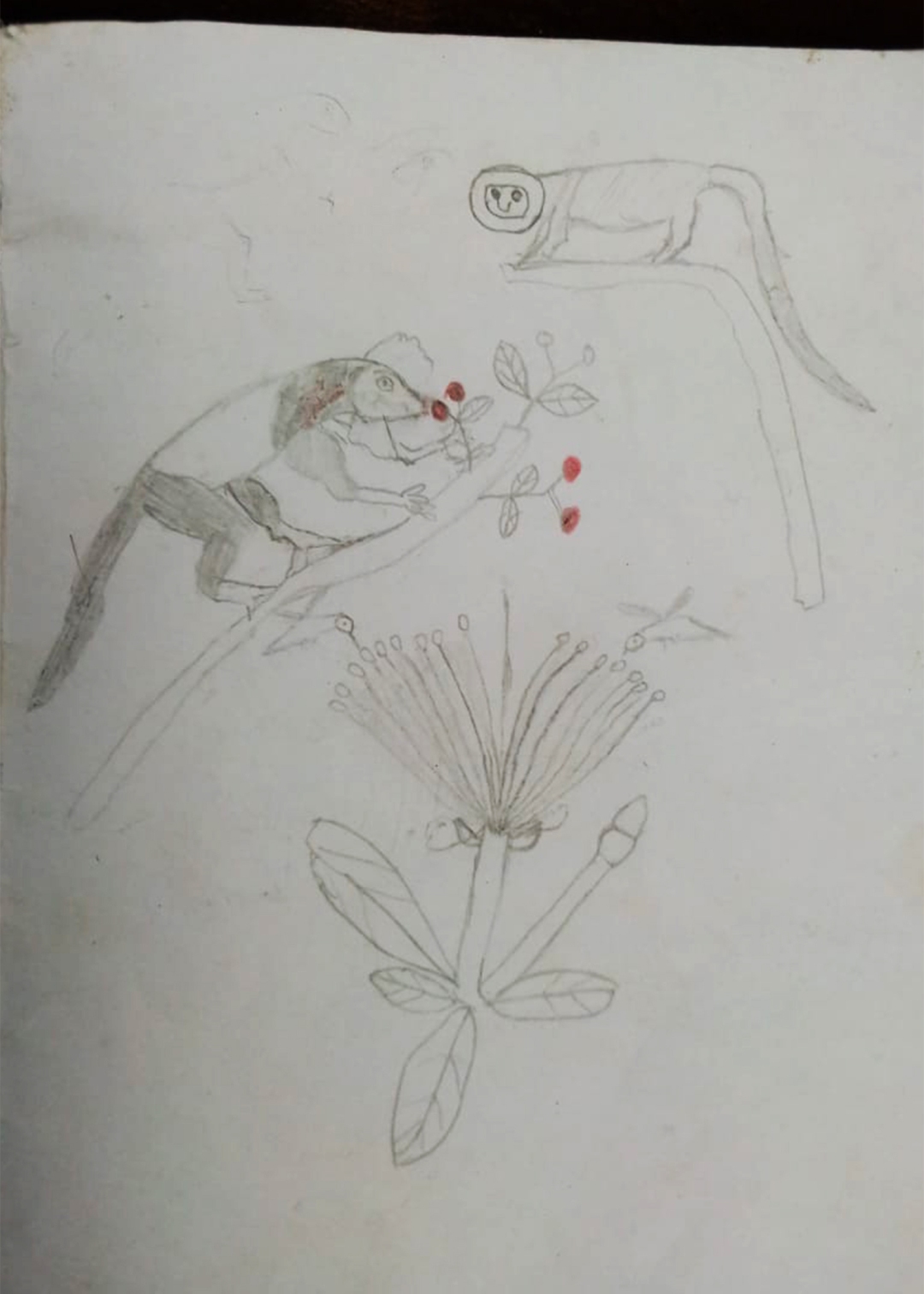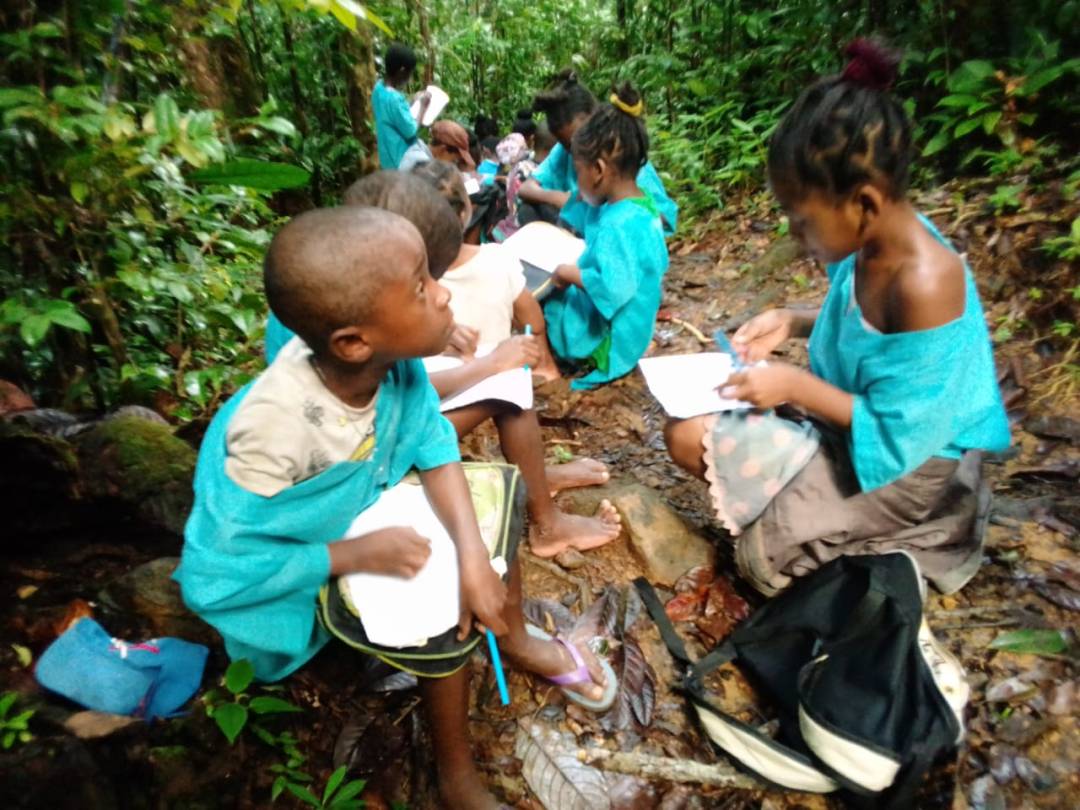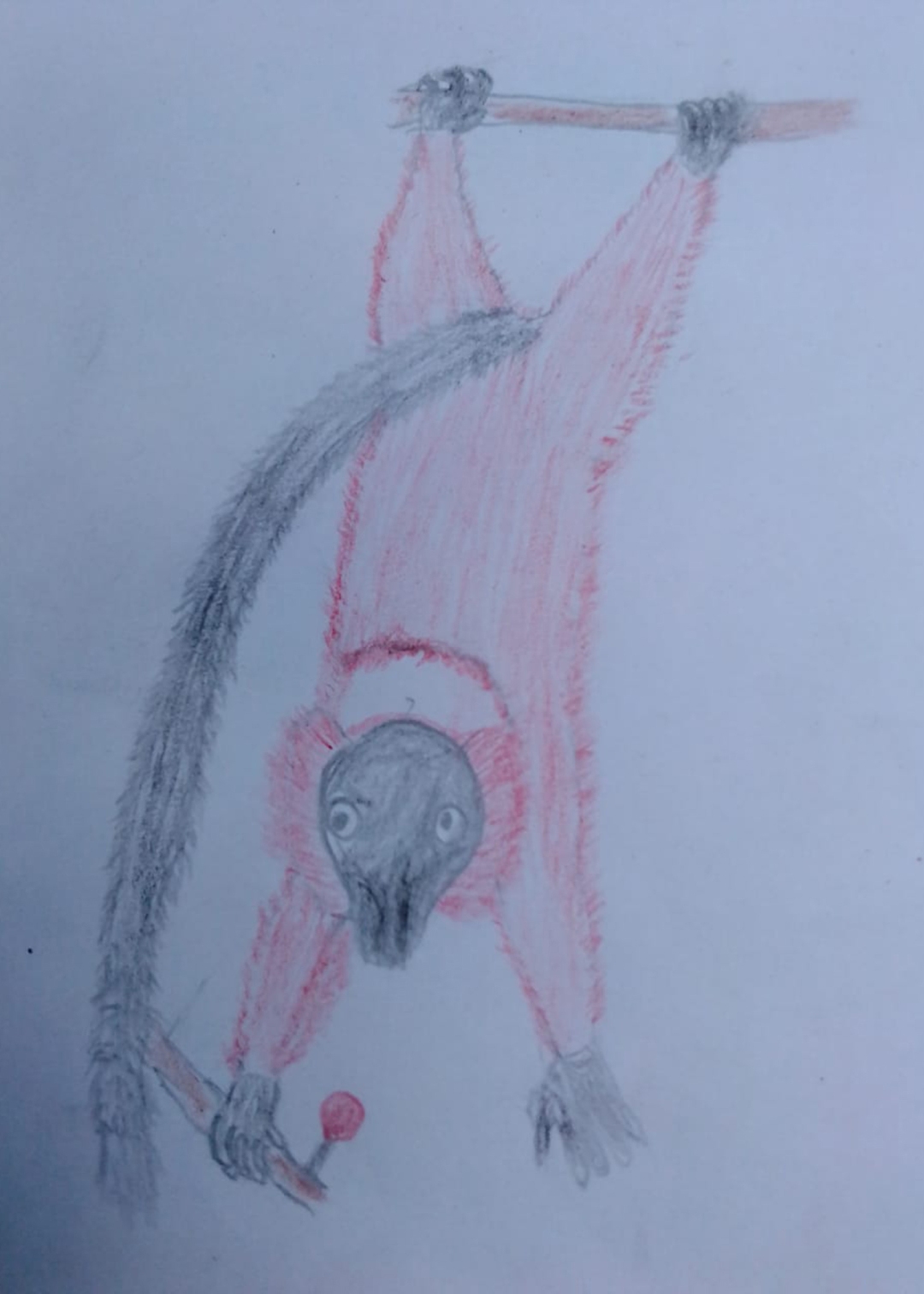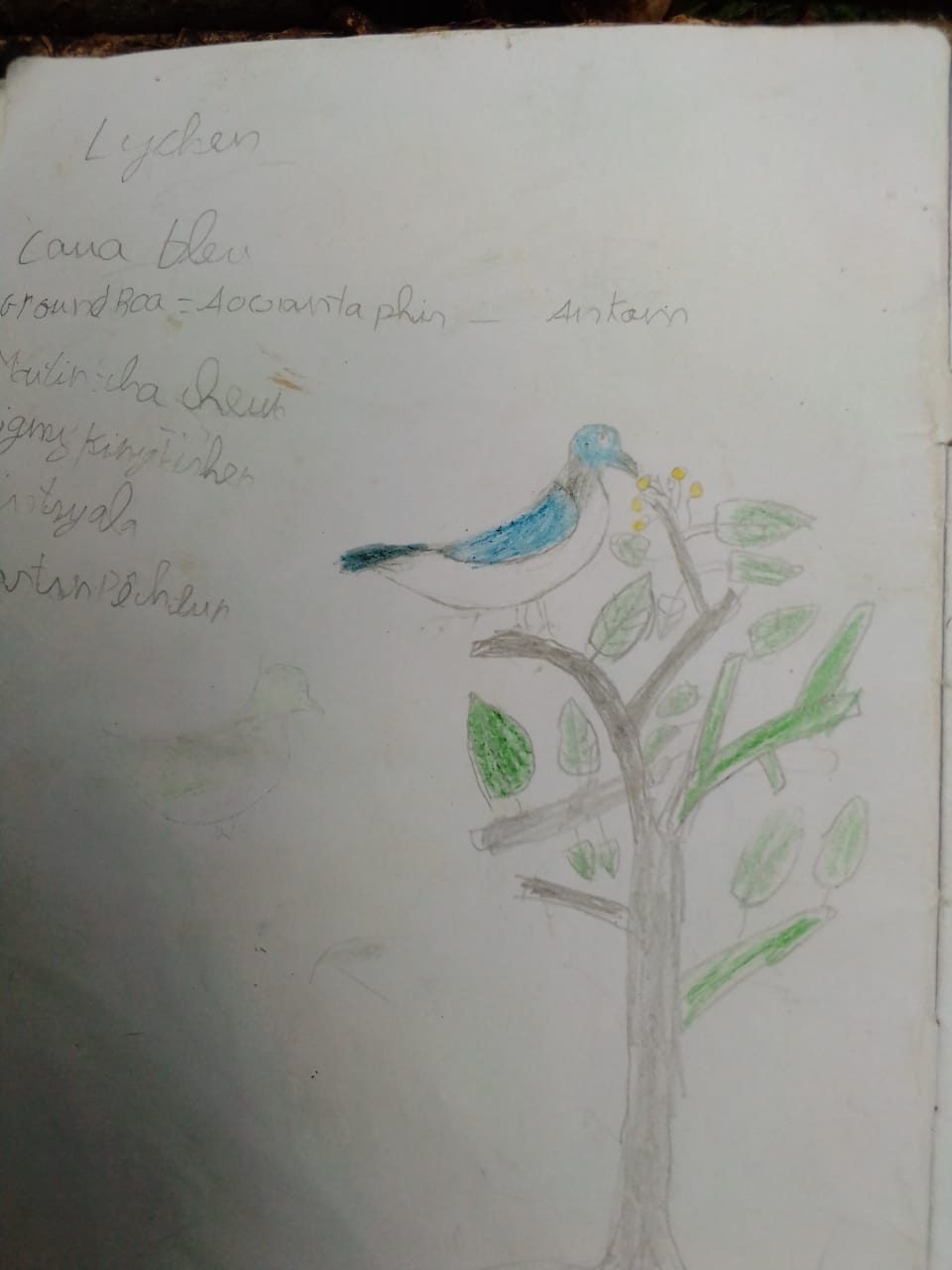Ambodiforaha village, Madagascar
Project update by Kathy West, with photos by Pascal Elison; July 13, 2020
In late June, 2020, as PICC Team member Pascal Elison headed out from Maroantsetra on the long ocean boat ride and hike to the village of Ambodiforaha, he was a little worried that the children would not want to participate in the PICC program or have any interest in the forest during the school holidays (COVID19) and wet and rainy days. Happily, Pascal (Malagasy guide and owner of Masoala Safaris) found the 28 school-aged children (6–14 years old) eager to go to the forest, rain or shine, night and day, and excited to learn about their local forest ecosystem and animals.

The village of Ambodiforaha in northeast Madagascar sits adjacent to the stunningly beautiful Masoala National Park, an area rich in biodiversity. This NP and UNESCO World Heritage site protects much of Madagascar’s mammalian diversity. On the Masoala peninsula, 9 out of 10 species of lemurs present are vulnerable, endangered or critically endangered with some species’ only remaining populations found in this protected habitat.
COVID19 in Madagascar
The coronavirus has unfortunately reached Madagascar and travel to and within the country is extremely limited, forcing the cancellation of the PICC session planned for July. Wanting to still move forward with conservation education while working within restrictions due to the worldwide pandemic, Kathy West (US) and Pascal (Madagascar) worked together to design a simplified, yet effective PICC session using coloring worksheets and blank page journals. This 10-day “mini-PICC” program focused on the art of “truly seeing” and the power of sketching, and through those new skills, with Pascal’s guidance, gathering new knowledge and appreciation of the plants, animals and ecosystems in their local forests.
“The act of creating an image with photography or sketching rewires us to be truly present and see details and beauty on a deeper level of appreciation.” ~PICC

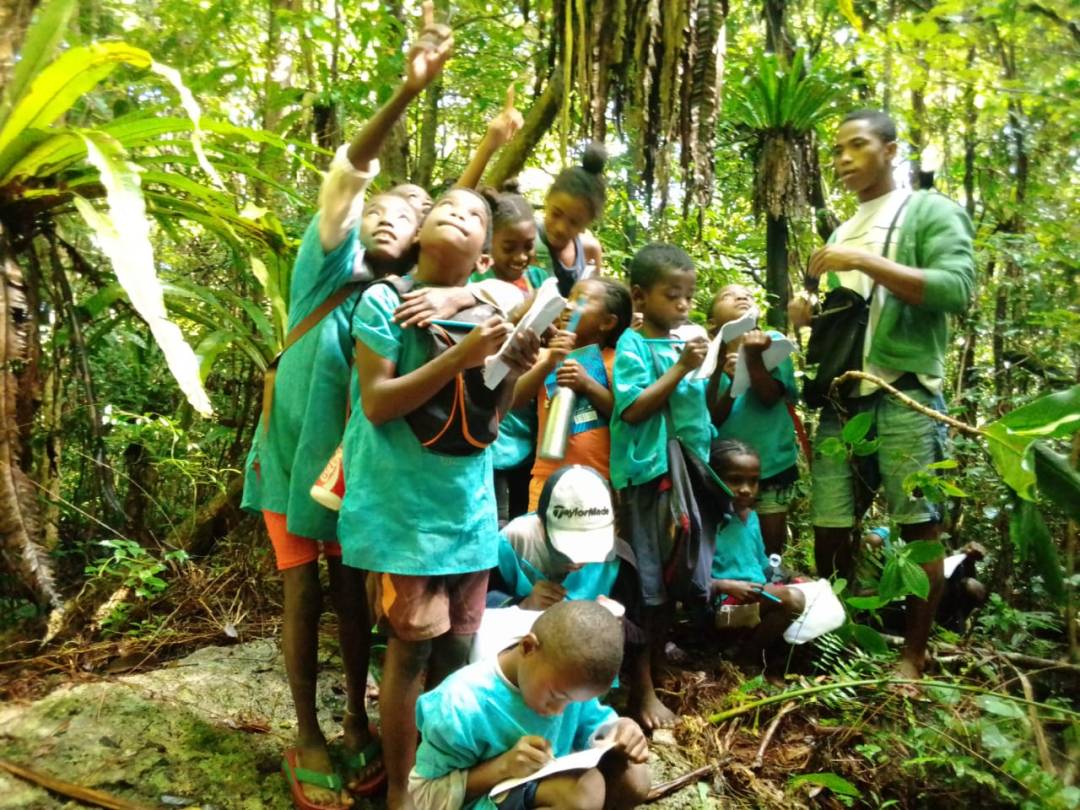
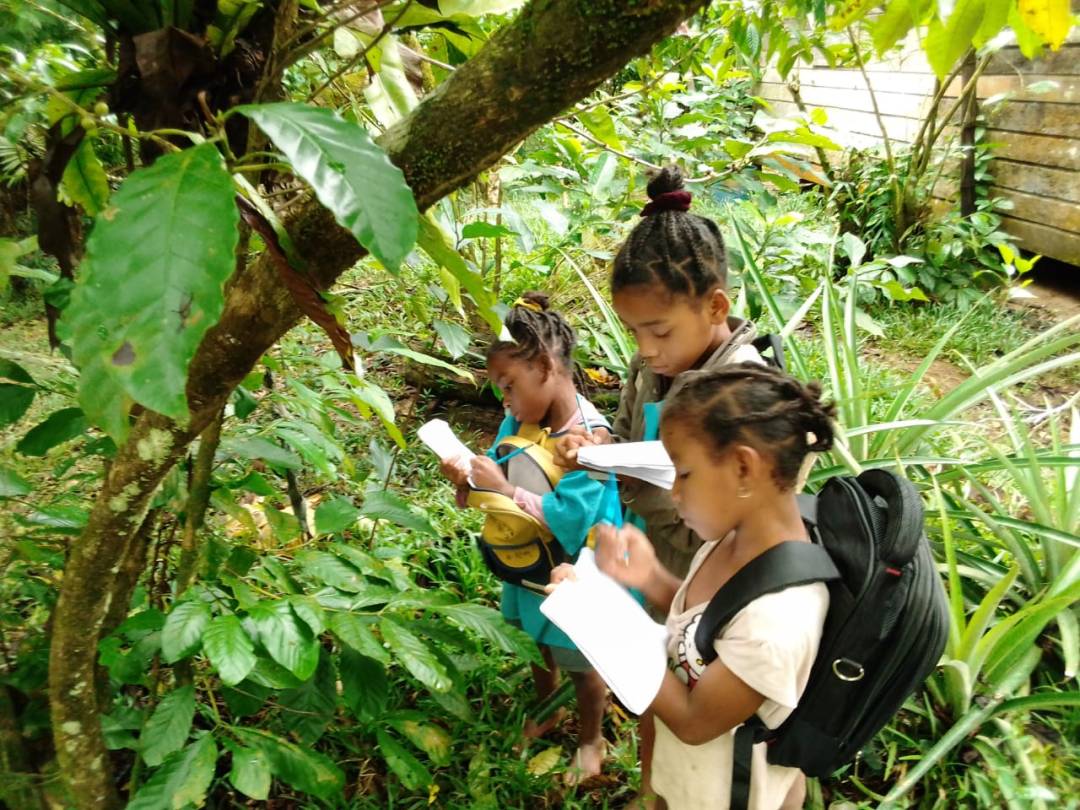

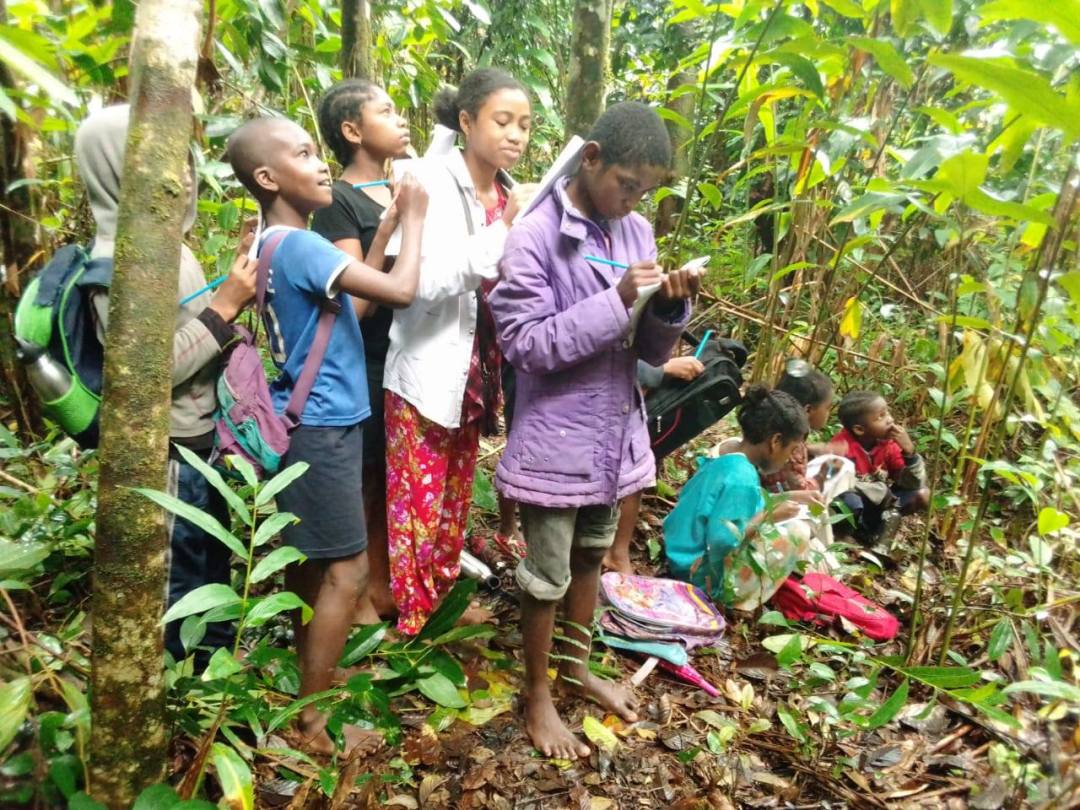
Although brief, this first PICC session in the forests of Masoala was an unqualified success! The teaching materials, hikes and experiences excited and engaged the children, educated the teacher, informed and pleased the parents, and delighted the local lodges that rely on ecotourism. The children have already expressed interest in continuing their sketching and the teacher is going to be leading the children one to two days a week in forest lessons, even during the school holidays.
We are excited about expanding these efforts with the full PICC program in the future, including teaching the children the skills of photography, writing and journal sketching, and then publishing these students’ creative works in a book with local sales to go to conservation funds. When tourists are able to return to Masoala NP, there will be a large contingent of enthusiastic student ecotourism hosts for their area!
Pascal Elison grew up in these northeastern forests of Madagascar and is an experienced and knowledgable eco-guide. He was first taught to draw plants in primary school by a visiting teacher and described how this single event ignited a life-long interest in learning about Madagascar’s ecosystems, flora and fauna, and the wish to share his enthusiasm with visitors. He has discovered that he also has a passion for teaching children!
This program could not have happened without Pascal’s creative ideas, skilled leadership, and his enthusiasm for educating and inspiring the children. We are so grateful to have such talented Malagasy partners on the PICC Team!
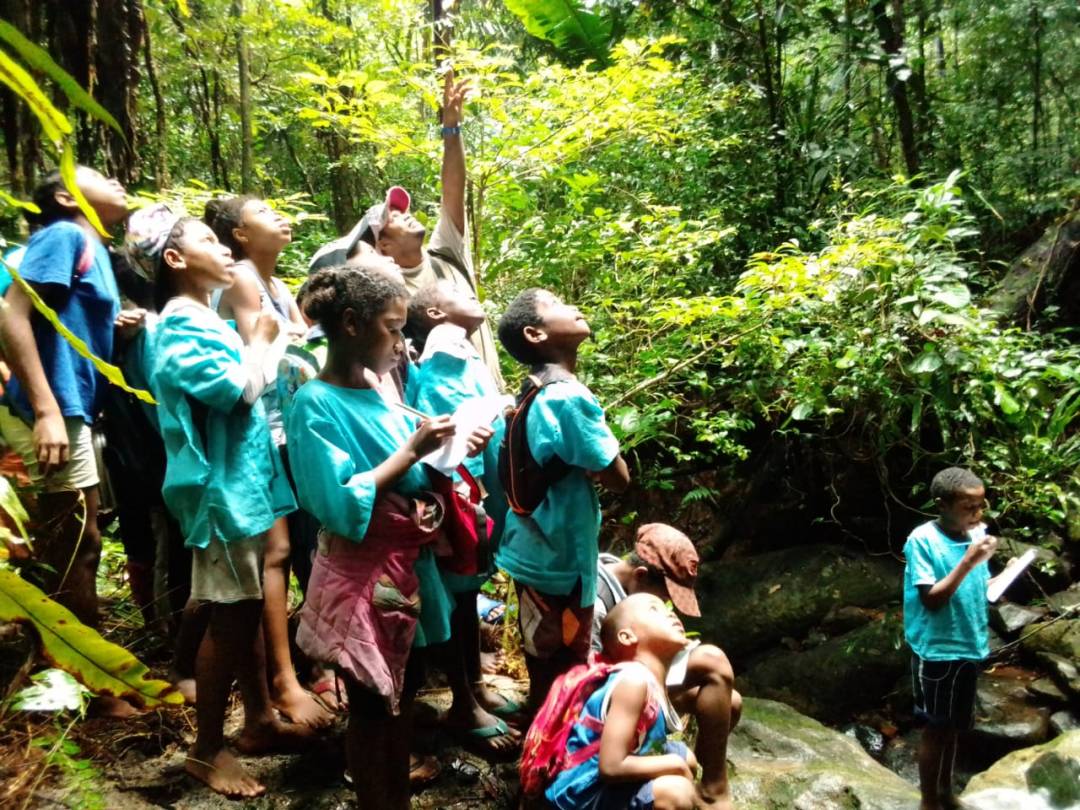

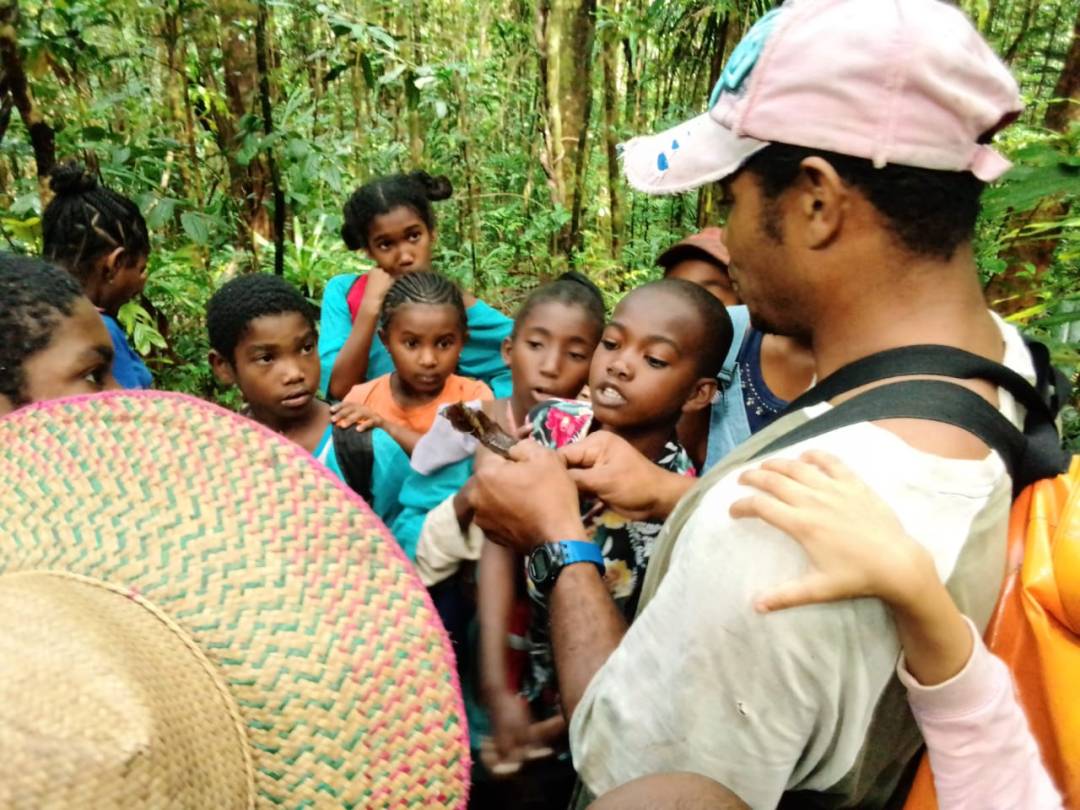
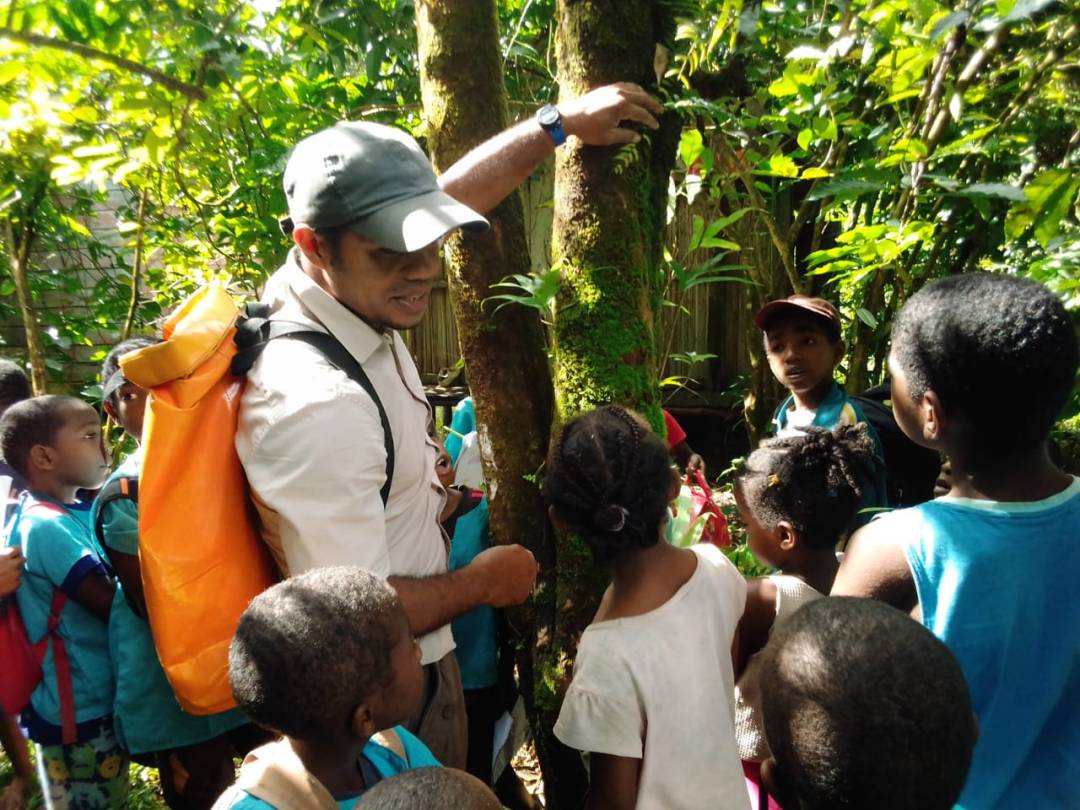
As a seasoned guide, Pascal is capable of replicating many frog calls, insects, and bird sounds and taught the children how to identify the animals by sound alone. They are now practicing their ID skills when they hear birds, lemurs, insects or frogs during the day or night. He also taught them which habitats and foods the animals prefer so that the children can further locate and learn about specific species.
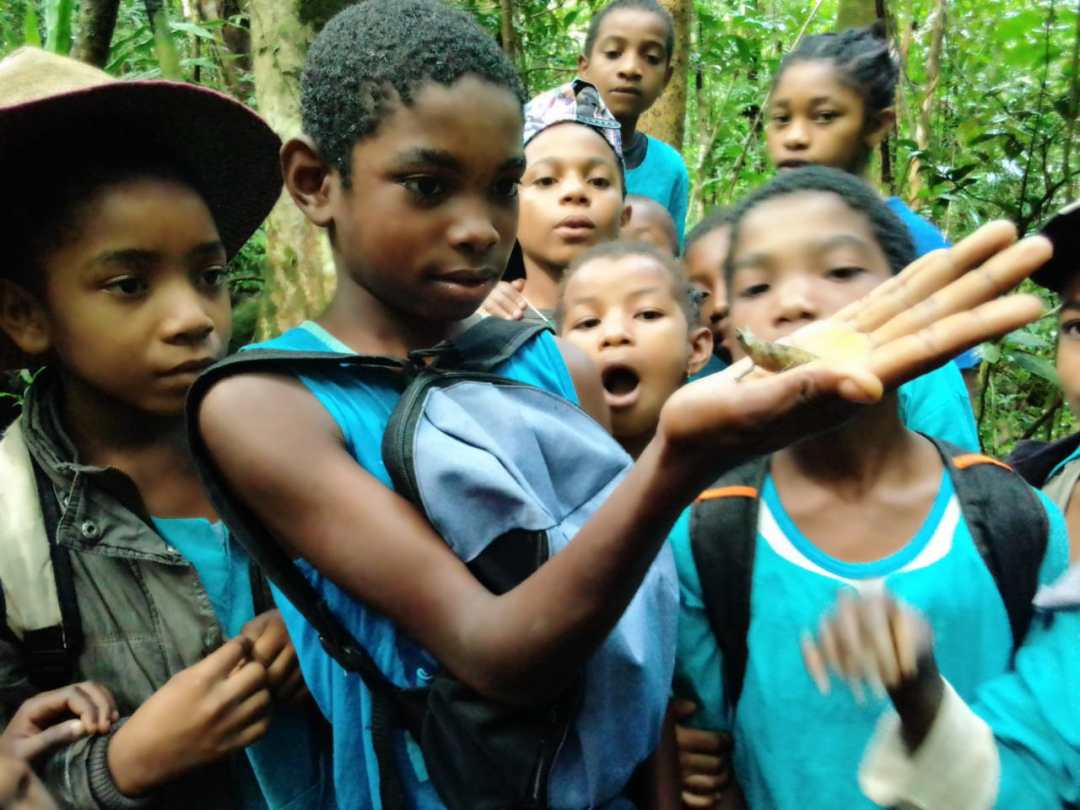
Traditional Cultural Fady (taboos). The children were amazed and awed by the lemurs and familiar animals, and cautious and frightened of creatures that they had never seen before or heard about only in cultural stories. Finding a Brookesia, a tiny leaf chameleon, was terrifying to them until Pascal showed them how to gently hold it in the palm of their hand. Everyone wanted a turn!
Similarly, they had heard traditional Fady in their cultural stories about the aye-aye. From Pascal the children learned about all the incredible adaptations and behaviors of the aye-aye, and how this lemur actually helps their family’s agriculture by eating the grubs of harmful insects. Pascal told the children how the aye-aye is one of the most sought after lemurs for tourists to see and people come from all over the world to stay in their lodges and see the aye-aye and other lemurs. On the night walks they were actively searching for the aye-aye and excited about trying to see one!
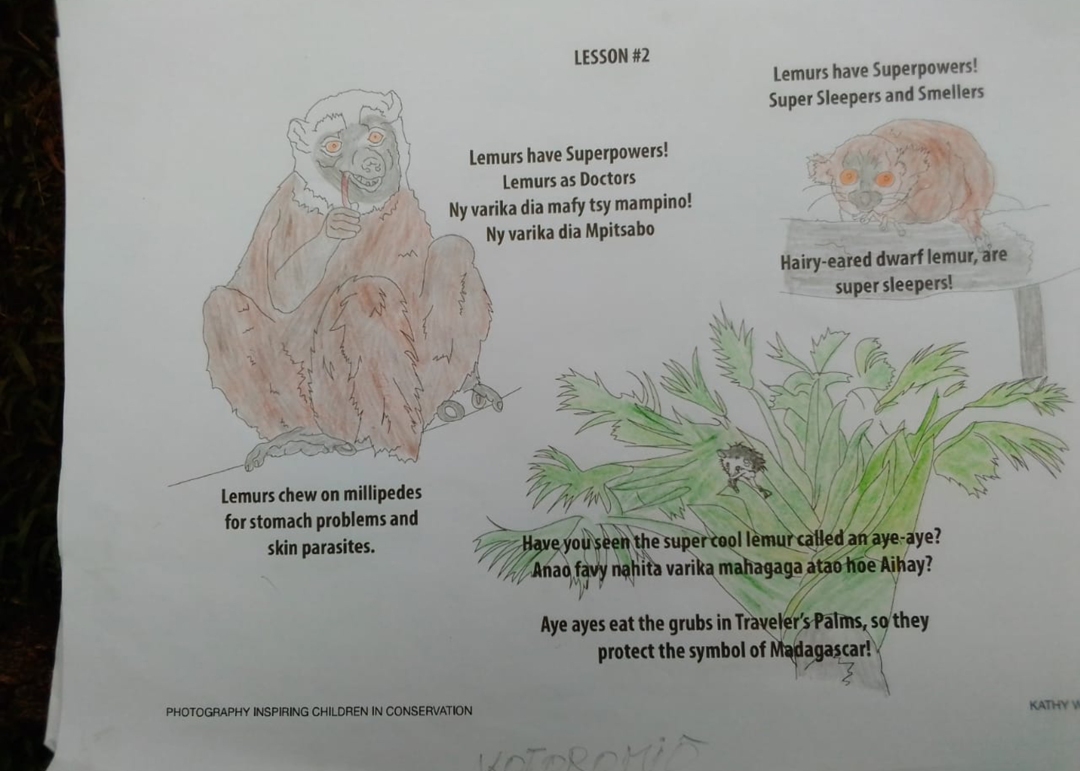
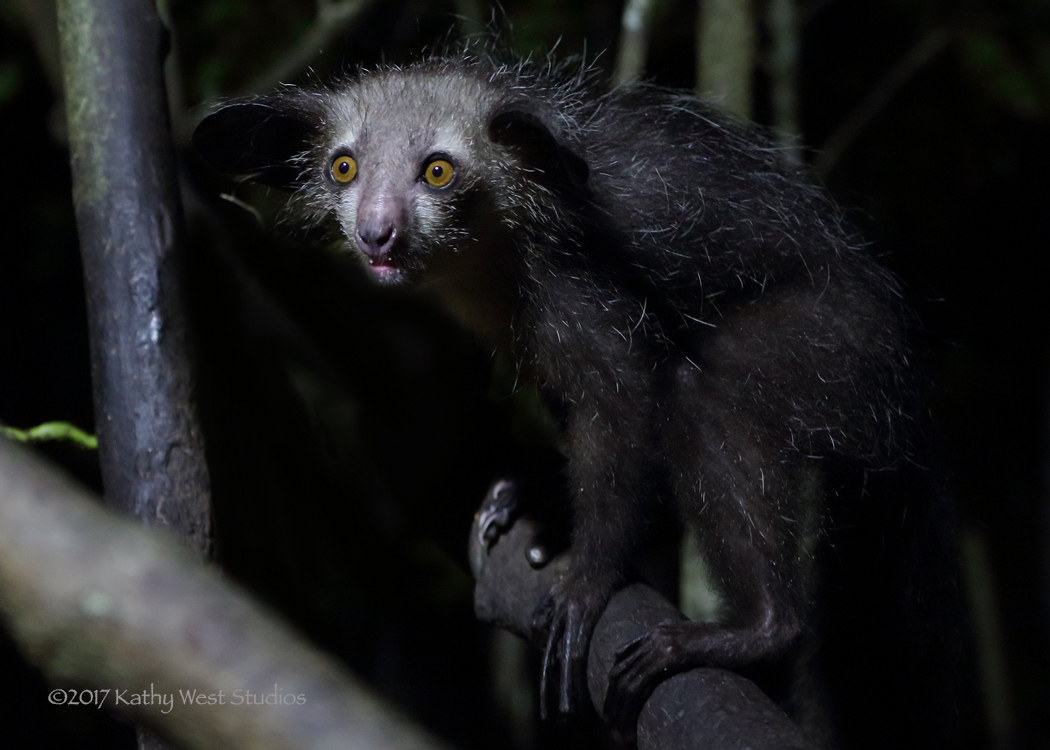
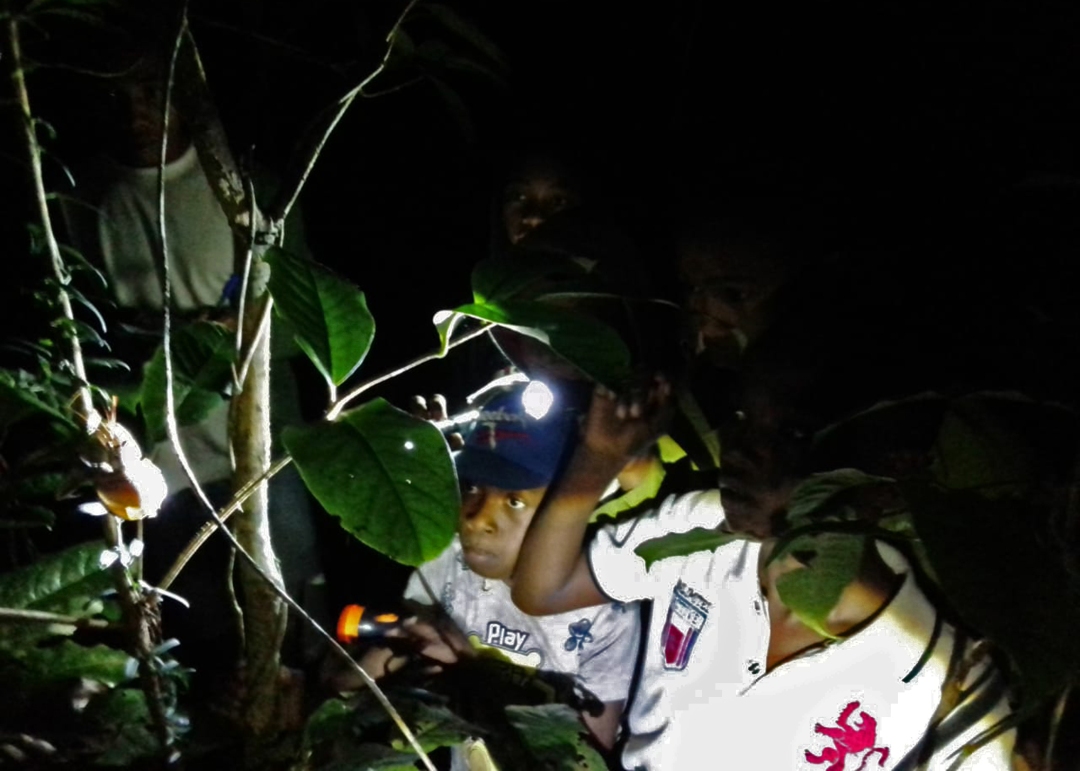
During the day, they saw a ring-tailed mongoose hunting in the mangrove forest. This provided an excellent opportunity to demonstrate the importance of the mangrove forests to not only the animals but also to their own communities – protecting the land from ocean surges and flooding, and providing sheltered root systems for fish nurseries.
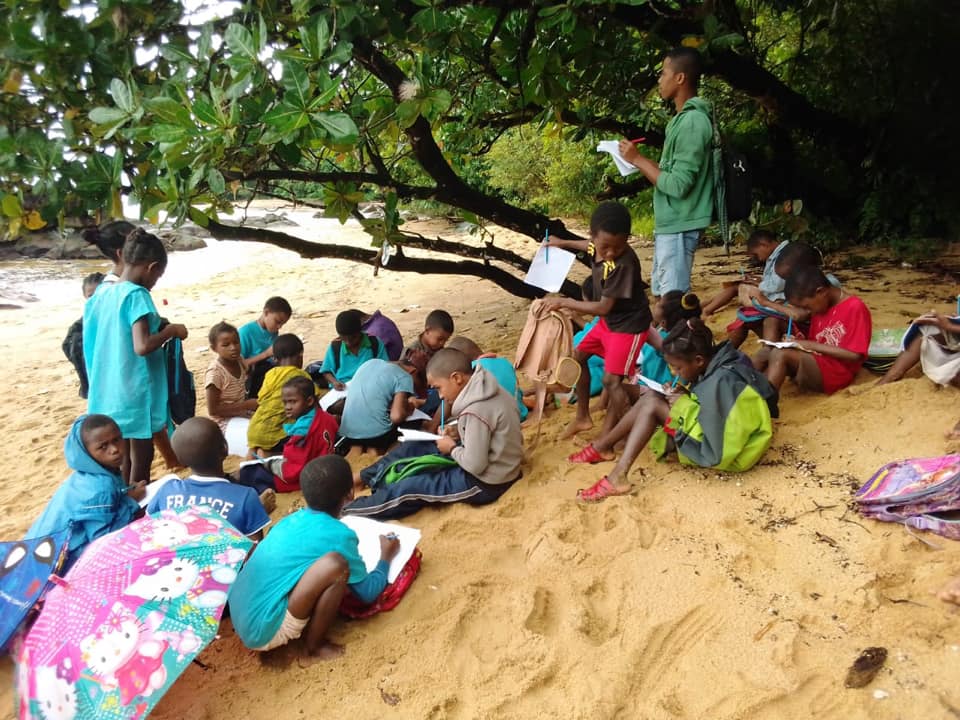
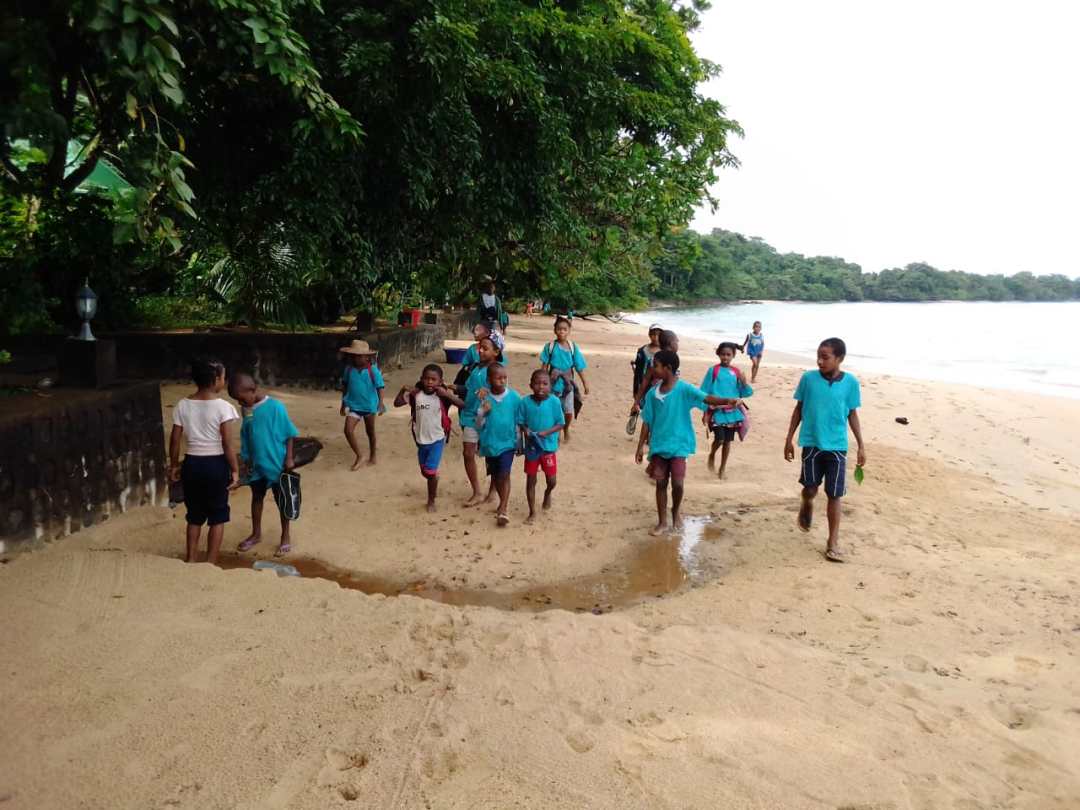
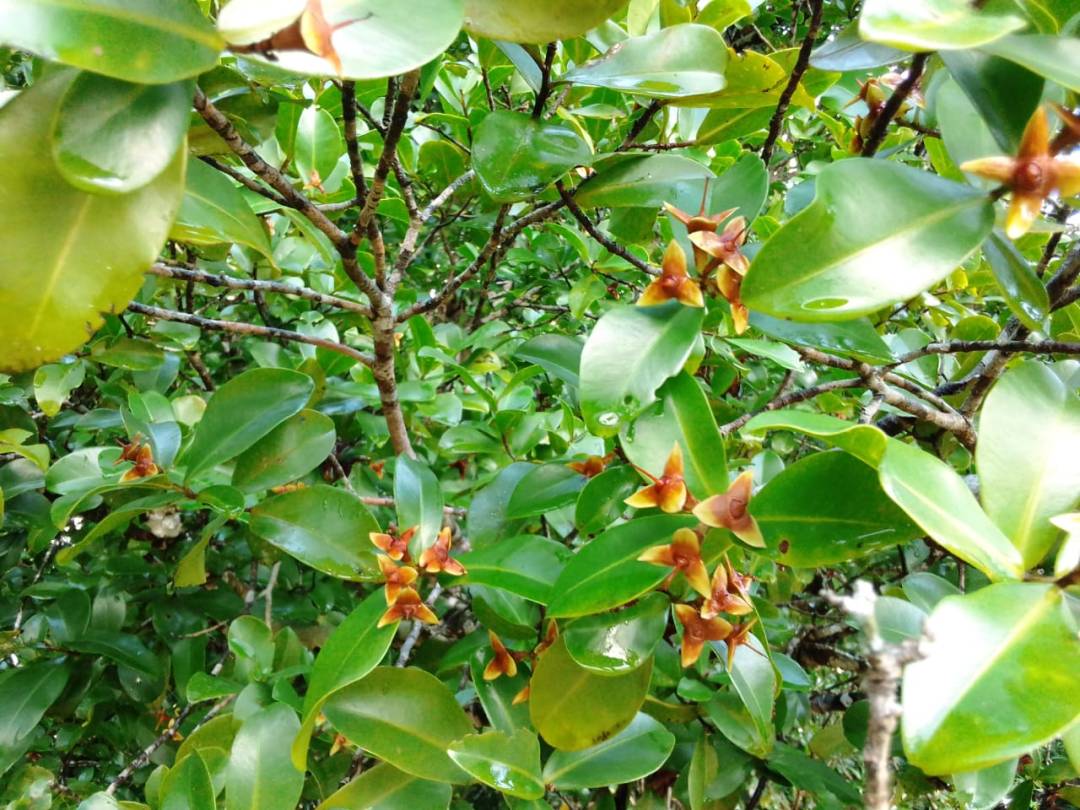
Night Hikes
“We had incredible night walks” said Pascal, “and the children asked to go again and again on the night hikes, but many nights were too rainy! On the first night we found the Masoala sportive lemur, 2 big frogs, a lot of insects, a sleeping pygmy kingfisher, and leaf tailed geckos. On the second night walk we found a mouse lemur, another Masoala sportive lemur, a Masoala woolly lemur, and many birds: a Bernard hermit, sleeping sunbirds, a Paradise flycatcher and a pygmy sunbird.”
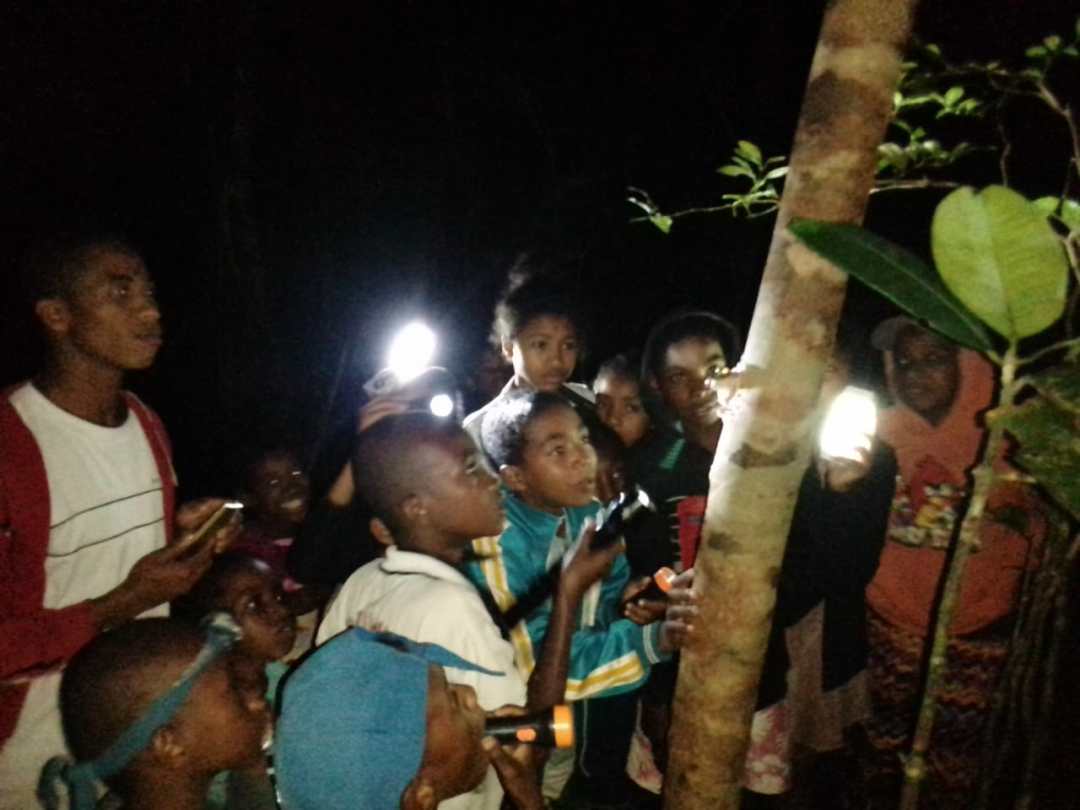
“Even the kids found the lemur on their own— they spotted the eye “sun” of the lemur in the tree— so wonderful!” The students saw the night lemur before Pascal did and they took a great deal of pride in that discovery, using skills that they had just learned using their flashlights (torches) to look for the eye shine of the animals.
Notebooks. Each child had their own blank-page notebook to take notes and make sketches in the forest. They made incredibly detailed, informed and beautiful drawings while on their hikes!
A set of multi-language lesson worksheets with line drawings and lesson prompts in English and local Malagasy dialect was printed for each child. They were illustrated and designed by Kathy West with translations by Pascal Elison. Pascal used these lessons to teach important points on lemur biology, behavior, and special adaptations, what lemurs need to survive and thrive, why lemurs are important to the forest and to their local community, what the students can do to help the lemurs, and what careers they can pursue in ecotourism.
The students’ drawings and worksheets are being displayed at the Ambodiforaha primary school and will be shared by the teacher with future visitors, including many tourists and government officials, demonstrating local commitment to conservation and environmental education. Students were so pleased with and proud of their drawings that they asked to take them home to share with their family. The parents expressed their appreciation for the classes and were pleased that their students were so enthusiastic with their new knowledge and skills.



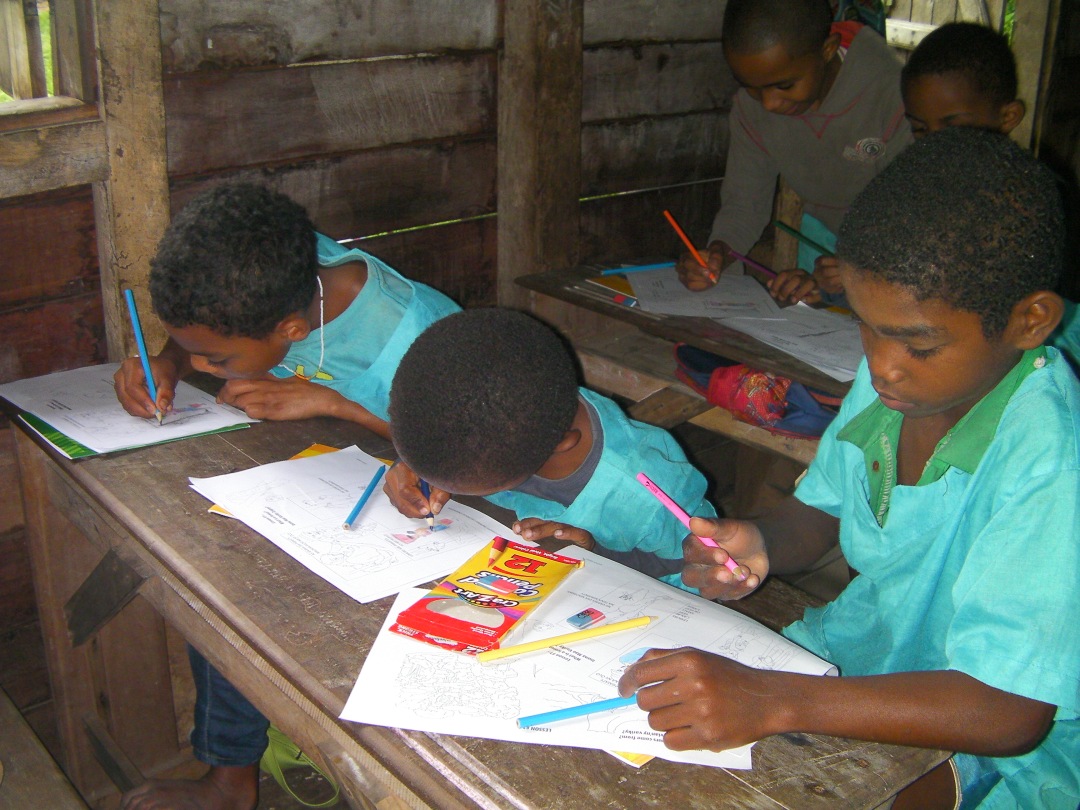
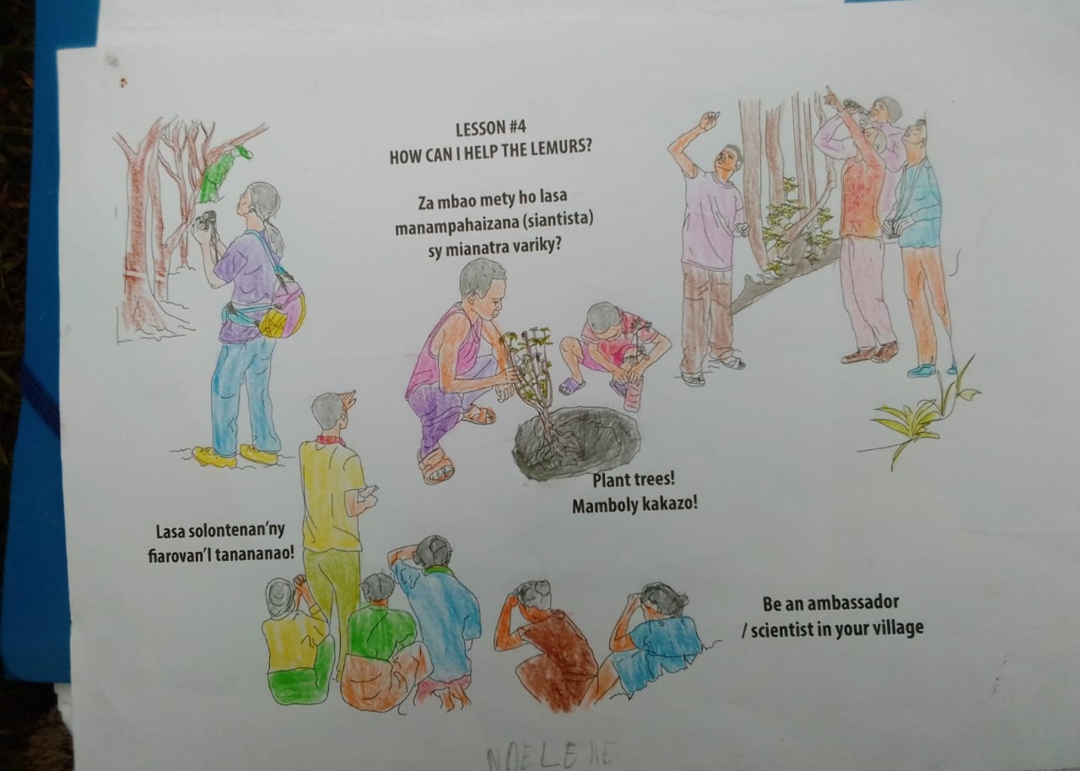
Ambodiforaha Teacher
This primary school teacher, simply called “Teacher” by the entire village, is responsible for educating all school-aged students in the village (presently 28 children between 6 and 14 years old) in all academic subjects. He is very knowledgeable on the ecology of marine life and takes the kids snorkeling to learn about the ocean and marine environments, ecology, flora and fauna. However, he was less familiar with the forest ecosystem and animals. Excited to learn alongside his students, Teacher took constant notes from Pascal’s instruction about everything from the insects to the plants and the lemurs. He is enthusiastic to keep learning and to continue taking the children into the forest for more discoveries, exploring environmental and conservation education together.
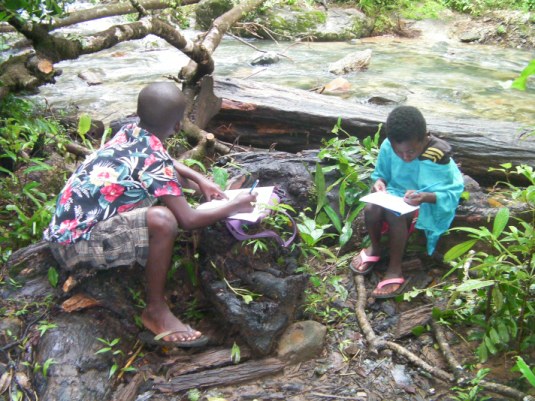
Pascal talked to the parents about the value of environmental education in the next generation. The parents were thrilled with their students’ enthusiasm for learning and their pride in sharing the worksheets and journals, along with many stories of their forest adventures. As a bonus, these parents, just like many parents worldwide, are trying to balance going to work and having the children out of school due to the pandemic, and they appreciated the learning activities while school is on hold.
We are so happy that the PICC program was effective in engaging the children in the biodiversity of their local forest, but the most gratifying part was that the children are sharing this excitement with their families and have learned the importance of protecting the lemurs and other biodiversity. The program has kindled a passion for learning not just in the students, but also in their teacher. The PICC program was designed with a goal of building local capacity for sustainable conservation, through educating and empowering the local teachers, elders, and other community leaders, and helping them to incorporate their knowledge into a teaching curriculum for all students and fellow teachers. The students and Teacher will be provided with additional journals and art materials as needed, so that they can keep nurturing this new enthusiasm and appreciation for their local biodiversity. ~Kathy West, PICC Director
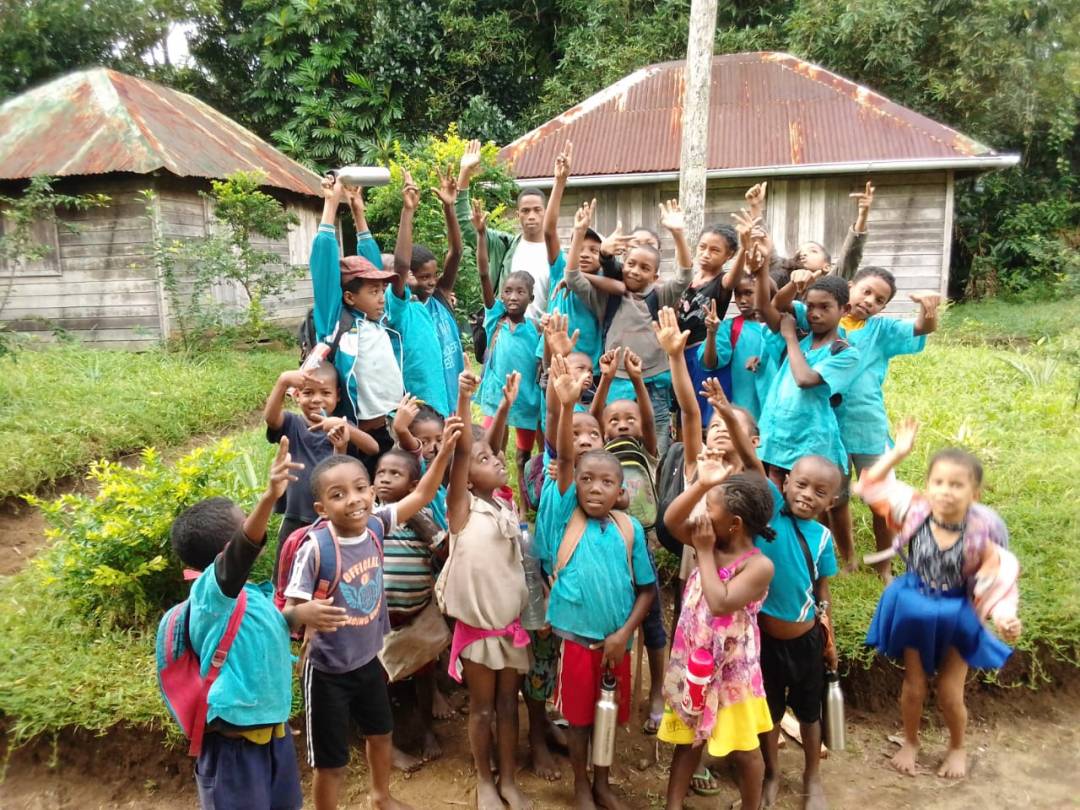
A special thanks to those that have donated to this project. We were able to supply the children with notebooks, pencils and colored pencils, and also snacks for each day. Additionally, a professional salary was paid to Pascal for his amazing efforts. We have begun fundraising to be able to conduct the full program in summer 2021. Please help us reach more children!
All photos on this page are by Pascal Elison, unless otherwise noted.
